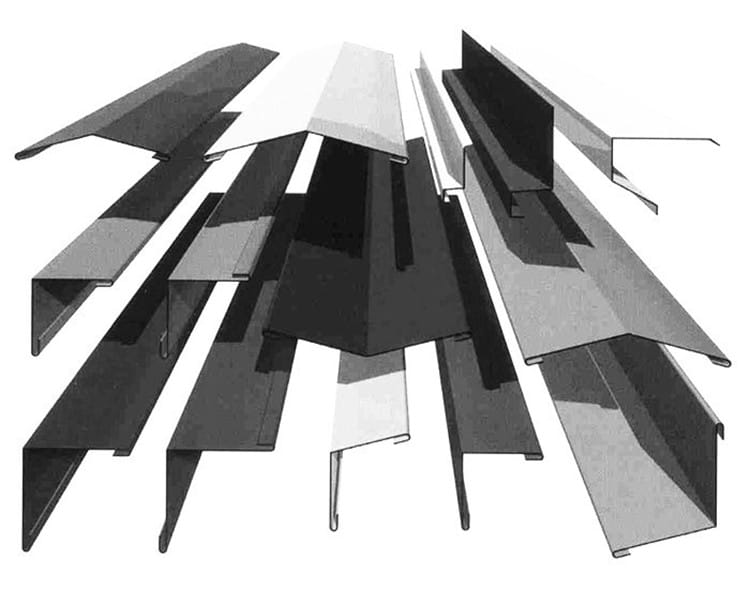Description
Metal Building Flashing
In modern buildings, flashing is intended to decrease water penetration at objects such as chimneys, vent pipes, walls,windows and door openings to make buildings more durable and to reduce indoor mold problems. Metal flashing materials include lead, aluminum, copper, stainless steel, zinc alloy, and other materials.

Types:
Metal Building Flashing are named according to location or shape:
placed around discontinuities or objects which protrude from the roof of a building to deflect water away from seams or joints and in valleys where the runoff is concentrated.
Wall flashing
may be embedded in a wall to direct water that has penetrated the wall back outside, or it may be applied in a manner intended to prevent the entry of water into the wall. Wall flashing is typically found at interruptions in the wall, such as windows and points of structural support.
Sill flashing (or sill pan)
A concealed flashing placed under windows or door thresholds to prevent water from entering a wall at those points.
Roof penetration flashing
Used to waterproof pipes, supports, cables, and all roof protrusions. Stainless steel penetration flashings have proven to be the longest lasting and most reliable roof flashing type.
Channel flashing
Shaped like a “U” or channel to catch water (e.g., where the edge of a tile roof meets a wall).
Through wall flashing
Spans the thickness of the wall and directs water to weep holes.
Cap flashing (drip cap)
Often used above windows and doors.
Drip edge
A metal used at the edges of a roof.
Step flashing (soaker, base flashing)
Pieces of flashing material which overlap each other in "steps".
Counter flashing (cap flashing)
Covers a base flashing.
Pipe flashing (pipe boot, vent boot, pipe flange)
A product used where pipes penetrate roofs.
Chimney flashing
A general term for flashing a chimney.
Kickout flashing
At the very bottom of a roof/wall intersection, the lowermost step flashing specially formed to deflect water away from the wall.
In the valley of two intersecting roof planes.
A structure incorporating flashing has to be carefully engineered and constructed so that water is directed away from the structure and not inside. Flashing improperly installed can direct water into a building.









